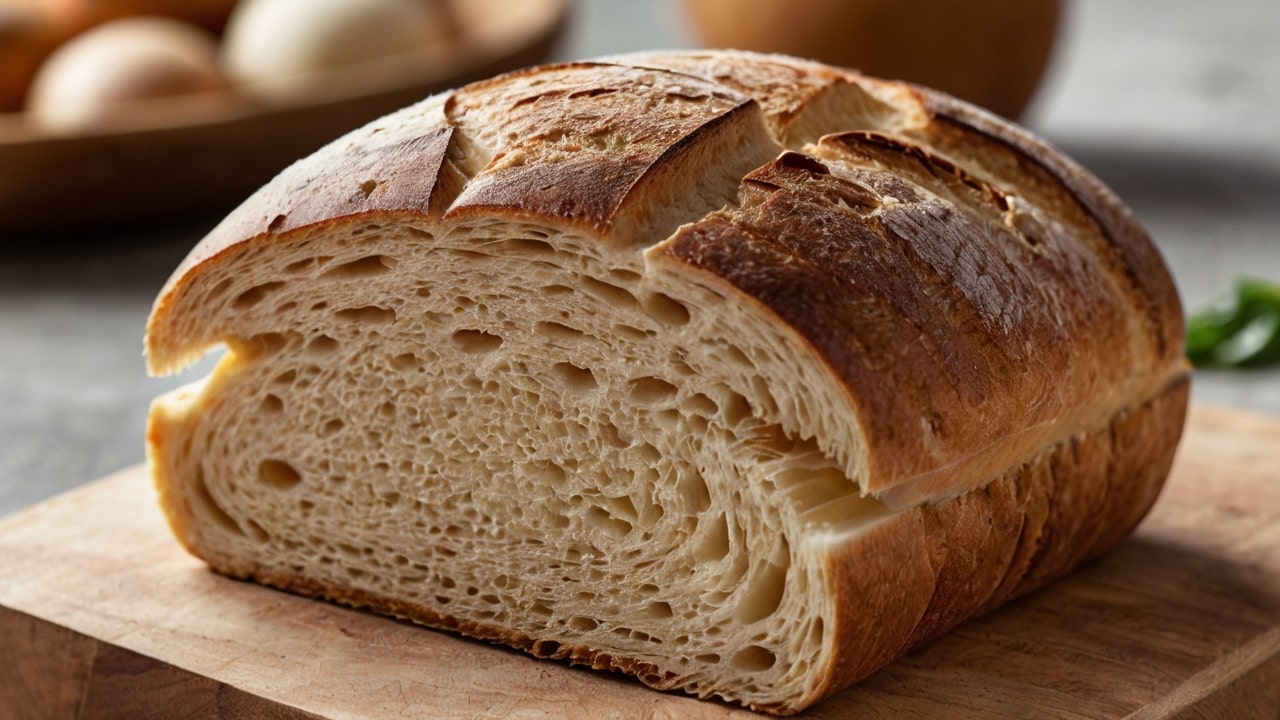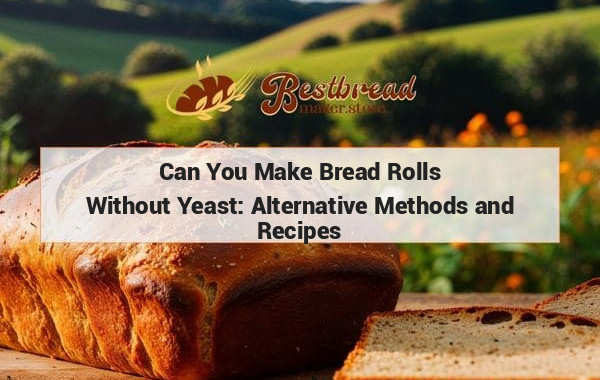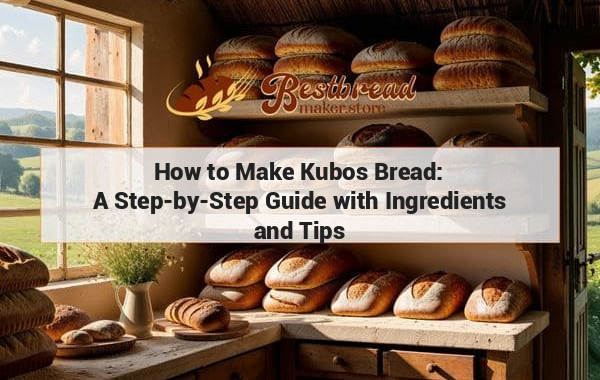What Bread is Used for Panini? Discover the Best Options
Discover what bread is used for panini sandwiches. Explore the best options, their characteristics, and tips for making delicious paninis.
When it comes to crafting the perfect panini, the type of bread you choose can make all the difference. Whether you're making one at home or selecting a bread at the grocery store, understanding what bread is best for a panini is crucial to achieving that authentic, crispy, and delicious sandwich experience.
What Bread is Used for Panini?

The main ingredient that makes a panini special is undoubtedly the bread. Traditional paninis are made using Italian breads such as ciabatta and focaccia. These breads have the ideal texture to hold up under the pressure of a panini press without becoming soggy or losing their shape. Ciabatta, with its light and airy texture, provides the perfect vessel for a variety of fillings, while focaccia adds a flavorful punch, often infused with herbs like rosemary, and is slightly denser.
However, the variety doesn't stop there. Other types of bread that work exceptionally well for paninis include baguettes, sourdough, and multigrain breads. Each type of bread brings a unique flavor and texture to the sandwich, allowing for creativity and personalization based on your taste preferences and the ingredients you plan to use.
Exploring Italian Breads for Panini

When thinking of panini, Italian breads come to mind first, and for good reason. Let's explore why ciabatta and focaccia are the go-to choices for an authentic panini experience.
Ciabatta
Ciabatta is a classic choice for making paninis due to its structure. Originating from Italy, this bread is known for its open crumb, chewy texture, and lightness, making it perfect for pressing. The irregular holes in ciabatta allow the bread to absorb flavors from the fillings while maintaining its integrity during grilling. Whether you're making a simple ham and cheese panini or a more elaborate one with roasted vegetables, ciabatta offers the versatility needed for a wide range of recipes.
Focaccia
Focaccia is another popular Italian bread used for paninis, particularly when you want to add a burst of flavor to your sandwich. This bread is often baked with herbs, olive oil, and sometimes even cheese, giving it a robust flavor profile that can elevate any panini. Due to its slightly denser texture compared to ciabatta, focaccia holds up well under the heat of the panini press, ensuring that your sandwich is crispy on the outside yet soft and flavorful on the inside.
Bread Types Beyond the Traditional

Beyond the traditional Italian breads, there are other types of bread that can be used to make delicious paninis. Each brings something unique to the table, and depending on your preference, you might find that one of these alternatives works even better for you.
Baguette
A baguette offers a crusty exterior and a soft interior, making it another excellent choice for paninis. The key to using a baguette is slicing it correctly to ensure that it fits into the panini press without overwhelming the other ingredients. The sturdy nature of a baguette also makes it ideal for holding up heavier fillings like meats and cheeses.
Sourdough
Sourdough is beloved for its tangy flavor and hearty texture. When used for paninis, it provides a satisfying crunch, especially after grilling. The sourdough's natural flavor pairs well with both savory and sweet ingredients, making it a versatile option for any panini recipe.
Multigrain Bread
If you're looking for a healthier option, multigrain bread is a great choice. Packed with seeds and grains, this bread not only adds texture but also increases the nutritional value of your panini. The robust nature of multigrain bread allows it to complement a variety of fillings, from lean proteins to fresh vegetables.
Elevating Your Panini Game
Choosing the right bread is just the beginning. To make the perfect panini, it's important to consider the ingredients you're using and how they interact with your bread of choice. Here are a few tips to ensure your panini turns out perfect every time.
Balancing Fillings and Bread
The ratio of bread to filling is crucial. Too much filling can cause the bread to become soggy, while too little can result in a dry sandwich. Aim for a balanced combination where the bread and fillings complement each other. For instance, if you're using a light bread like ciabatta, avoid overloading it with wet ingredients. Instead, opt for drier fillings like grilled chicken or sliced cheeses.
Grilling Techniques
The way you grill your panini can also affect the final outcome. Preheat your panini press to ensure that the bread crisps up quickly without overcooking the inside. If you don't have a panini press, you can achieve similar results using a skillet and a weight, such as another pan or a brick wrapped in foil, to press the sandwich down as it cooks.
Adding a Finishing Touch
To enhance the flavor and texture of your panini, consider brushing the outside of the bread with a bit of olive oil or melted butter before grilling. This will not only add a golden crust but also infuse the bread with additional flavor.
Choosing the Right Bread Maker for Panini
When making paninis at home, having the right equipment can make all the difference. If you're a fan of freshly baked bread, investing in a quality bread maker could be a game-changer for your panini creations. Here's what to look for when choosing a bread maker specifically for making panini bread.
Bread Maker Features
A good bread maker should offer customizable settings, allowing you to control the crust color and loaf size. Look for a model that can handle different types of flour, as this will give you the flexibility to experiment with various bread types, such as ciabatta, focaccia, or even multigrain. A timer function is also beneficial, enabling you to have freshly baked bread ready just in time for lunch.
Top Bread Makers on the Market
Some of the top bread makers that are highly recommended for making panini bread include the Zojirushi Home Bakery Virtuoso Plus, Cuisinart CBK-200, and Breville Custom Loaf Bread Maker. These models offer a range of settings and features that make them ideal for baking bread specifically designed for paninis. With the right bread maker, you can enjoy fresh, homemade bread tailored to your exact specifications, making every panini a culinary delight.
Frequently Asked Questions About Panini Bread
To wrap up, let's address some common questions people often have when it comes to choosing and using bread for paninis.
What is the best bread for making paninis at home?
While ciabatta and focaccia are the most traditional choices, sourdough and baguettes are also excellent options depending on your personal preference and the ingredients you're using.
Can I use regular sandwich bread for paninis?
Yes, but it's important to choose a bread that can withstand the pressure and heat of a panini press. Regular sandwich bread might be too soft and could result in a less crispy panini. If you opt for sandwich bread, try using a denser variety or toasting it lightly before pressing.
Do I need a panini press to make paninis?
A panini press is convenient, but not essential. You can achieve similar results using a skillet and pressing the sandwich down with a heavy object. Just be sure to flip the sandwich halfway through cooking to ensure even grilling.
How do I prevent my panini from becoming soggy?
To avoid a soggy panini, be mindful of the moisture content of your fillings. Use ingredients that are not too wet, such as roasted vegetables, cured meats, or firm cheeses. You can also lightly toast the bread before assembling the panini to create a barrier that prevents moisture from seeping in.
What are some popular panini recipes?
Popular panini recipes include classic combinations like ham and cheese, caprese (with mozzarella, tomatoes, and basil), and turkey with cranberry sauce. The key is to choose flavors that complement each other and use high-quality ingredients.








